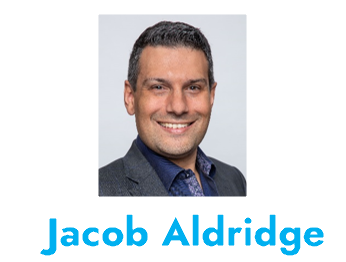A More Powerful Profit and Loss. In Blackboard Fridays Episode 98, John talks about Business Financials. Need this implemented into your business? Talk to the international business advisor who can do exactly that – Contact Jacob, Learn More, or Subscribe for Updates.
Most business owners fall into two extremes – those who love their financial reports and barely go a day without having a peek (go cloud accounting!), and those who read what their accountant sends them each year … maybe.
As we’ve discussed in previous episodes, great financial reports provide timely and valuable information to business leaders, helping you make better decisions today and for the long term.
In this week’s Blackboard Fridays episode, we welcome back John Knight from businessDEPOT to talk about one report specifically – your P&L (Profit and Loss) Statement. As your business grows, the simplistic clumping of information (that saved you time at Start Up) will mean you’re missing out on the nuances that may reveal super profitable opportunities … or parts of your business that are secretly losing a lot of money.
So what is ‘Segmentation’? And how can you apply it for more Profit?
Who is Jacob Aldridge, Business Coach?
“The smart and quirky advisor who gets sh!t done in business.” Back independent since 2019.
Since April 2006, I’ve been an international business advisor providing bespoke solutions for privately-owned businesses with 12-96 employees.
At this stage you have proven your business model, but you’re struggling to turn aspirations into day-to-day reality. You are still responsible for all 28 areas of your business, but you don’t have the time or budget to hire 28 different experts.
You need 1 person you can trust who can show you how everything in your business is connected, and which areas to prioritise first.
That’s me.
Learn more here. Or Let’s chat.
Transcript
Now your profit and loss statement is one of those performance reporting tools that you can continually use within your business. But it never ceases to amaze me the number of profit and loss statements we look at where you don’t actually get enough insights out of the data that the report is producing.
One of the simplest ways to do that is to actually segment your profit and loss which obviously is looking at your performance of your business by segment within that business.
Now depending on how you like to track your performance or what is the best way to track your performance in your business will determine what segments you use. Some people will use location by segment. So if you’ve got a number of different offices in different cities you might segment performance by location.
Or, you might have a particular type of product. So you might segment your P&L by profit type or it might be by a particular type of service that you are delivering. Whichever way you wish to monitor your performance or segment your performance, it’s easy these days to be able to produce a divisional or segmented profit and loss statement using most of the online accounting tools like a Zero or a MYOB or a QuickBooks.
Now what we’re trying to do with that is we want to be able to start to get a view of your P&L in columns. So instead of just having a one column P&L and having lots of accounts down the side, we wanna be able to have columns going across the page as well.
If we then code and allocate all of our information into the system by both segment and by the account down the page, so we’re going across and down the page. We can get so much more information out of your profit and loss statement.
For example, in this situation, we’ve got three different segments, okay? Now when I go out to talk to a client about their performance with a P&L like this, I actually start in the bottom corner down here because we will say your profit for the month or the quarter or the year to date is X dollars.
We then go along the bottom, okay? So going along the bottom we can see where that profit’s come from. Being able to see where it’s come from, that gives us a good idea of which divisions or which segments of our business are performing the best or worst.
Once we get along the bottom there we can obviously then go up with each of those. Now you can see here I’ve actually got cost of sales in as a percentage and because that’s usually your biggest variable expense within your business and so by working up, we can then apply formulas, use a bit of algebra.
Put yourself back into year seven math or something around there and how do we then work out how to improve this? By going up we can obviously add more to the top line, we can improve our cost of sales percentage which ultimately will improve our gross profits, or we can reduce our overheads to have a net profit improvement down at the bottom.
Once you know your business by segment and you’re able to break it up and across, you’re able to then focus on what can you do to add one more dollar to the bottom line and that creates a really great culture of continuous improvement for your business.
Next Steps
Want to learn more about how this can apply to your business? It costs nothing to chat:
- Email me jacob@jacobaldridge.com (I read them all)
- Call, Text, or WhatsApp me +61 427 151 181
- Or just Subscribe https://jacobaldridge.com/about/subscribe-to-jacob-aldridge-com/ to stay in touch




